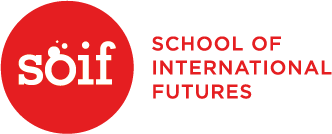In September, Cat attended a presentation at the Overseas Development Institute (ODI) by the Agence Française de Développement (AFD). They were presenting their new publication “Development agencies, steering through future worlds” a foresight exercise looking out to 2025 for development agencies today.
This publication is truly worth a read, especially for those in the development industry. It explores the implications of four clearly contrasting and well-researched scenarios (Impasse, Babel 3.0, Greening without States and Aligning Aspirations) with a particular focus on opportunities and challenges around the SDG agenda.
The real value of the exercise, however, lies in the insights and organisational change that it prompted within AFD, insights that we often see as the result of successful foresight studies.
Specifically it helped:
- enable an effective discussion of future trends and implications, opening a space in the organization for opinions and ideas to be discussed, especially fringe ideas or those that run against the established culture
- identify the skills that will be needed for staff and the organisation to be successful in the future
- identify new partners, “kindred spirits” who the organisation could work with to support their goals
- drive culture change by putting the future at the heart of decision-making rather than an “externality” to respond to
- develop new programmatic capabilities to cope with uncertainty, with new instruments and processes that enable adaptive programming (this is also a topic that ODI works on).
 Although thinking long term should be a common practice for development banks that often invest in long-term projects, AFD discovered that that very few development banks regularly conduct foresight exercises. This is a mistake. There is a clear need for more long-term thinking, not only to strengthen the organisation’s strategic planning, but to empower staff (see Cat’s work on strategic foresight as a key aspect of “system stewardship”). As AFD found, harnessing internal staff perspectives and insights, and building on these, can help to “identify the ‘statespeople’ of the organisation” and engage future leaders. This is a trend SOIF has seen in various places. For example, in the UK’s Foreign & Commonwealth Office younger staff came together to build a vision of the kind of office that would remain relevant for future foreign policy challenges and opportunities. A Russian strategy-making programme we have recently come across, also has a separate ‘under 35’ cohort looking at a longer-term future.
Although thinking long term should be a common practice for development banks that often invest in long-term projects, AFD discovered that that very few development banks regularly conduct foresight exercises. This is a mistake. There is a clear need for more long-term thinking, not only to strengthen the organisation’s strategic planning, but to empower staff (see Cat’s work on strategic foresight as a key aspect of “system stewardship”). As AFD found, harnessing internal staff perspectives and insights, and building on these, can help to “identify the ‘statespeople’ of the organisation” and engage future leaders. This is a trend SOIF has seen in various places. For example, in the UK’s Foreign & Commonwealth Office younger staff came together to build a vision of the kind of office that would remain relevant for future foreign policy challenges and opportunities. A Russian strategy-making programme we have recently come across, also has a separate ‘under 35’ cohort looking at a longer-term future.
While still lacking, there are positive signals as financial development organisations explore and adopt new approaches to scenario planning and futures. The UK’s Department for International Development used tools, such as scanning, commonly in the 2000’s, both in their offices as well as in country specific projects across Africa, some of which Cat participated in. While the Asian Development Bank’s “Road to 2030 Strategy” and the African Development Bank “At the Center of Africa’s Transformation Strategy 2013-2022” are using more and more long term foresight. T
his interest is likely to grow in the face of increasing uncertainty, the need to engage external stakeholders, and also because of work with the Sustainable Development Goals, which explicitly encourage a focus on 2030.

There is real benefit to taking a foresight approach. It creates space for counter-cultural thinking and proposals, which then have legitimacy. This can counter generational differences, enabling current leaders to work together with younger staff and those who are conducting the exercise. It builds a sense of cohort, playfulness, and a culture of openness and future-engagement. AFD found this in practice, and we think more organizations should follow suit.
